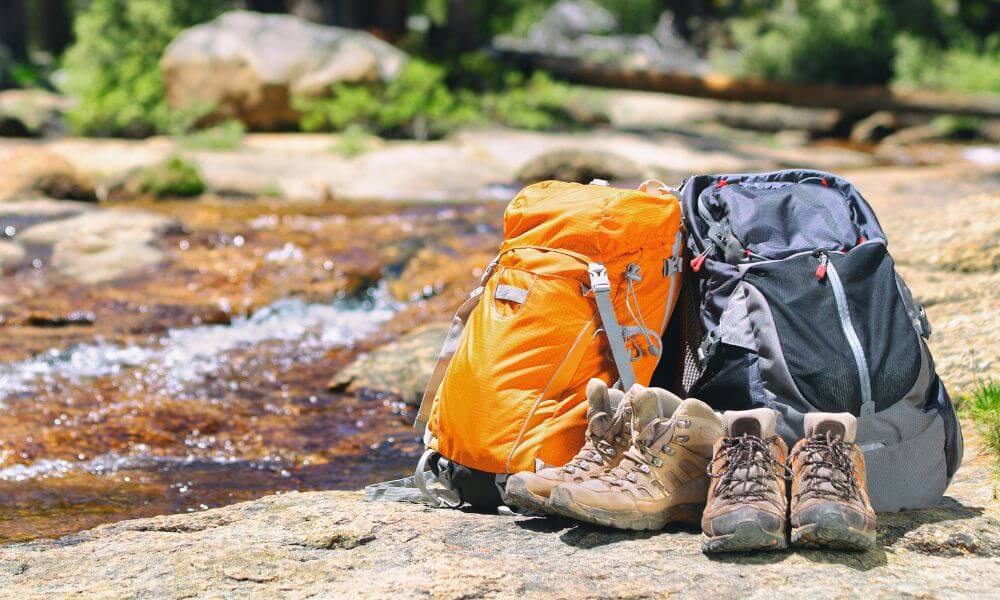Uncategorized
How to Pack Light for Your Next Camping Adventure
Packing light for a camping trip is essential for both comfort and convenience. Whether you’re embarking on a weekend getaway or a multi-day hike, carrying less weight not only makes the journey more enjoyable but also keeps your energy levels high and your gear organized. But how do you determine what to pack, and more importantly, what to leave behind? In this guide, we’ll show you how to pack light for your next camping adventure without compromising on the essentials.
1. Choose the Right Backpack
The first step to packing light is selecting the right backpack. Your pack should be large enough to carry all your necessary items but not so big that you feel compelled to overpack. Here are some tips on how to choose the right one:
- Capacity: For a short weekend trip, aim for a 30-50 liter backpack. For longer trips, you may need a larger 50-70 liter pack, but be mindful not to overfill it.
- Weight: Opt for a lightweight backpack made from durable materials like nylon or ripstop fabric. Look for one with comfortable straps, a padded hip belt, and good ventilation to reduce sweat buildup.
- Organization: A well-organized pack will make it easier to find your gear and prevent you from packing unnecessary items. Consider a pack with multiple compartments or one with a front-loading design for easy access.

2. Prioritize Multi-Use Gear
When packing light, versatility is key. Choose gear that serves more than one purpose or can be used in multiple situations. Here are some examples of multi-use gear to include:
- Sleeping Bag and Sleeping Pad Combo: Many sleeping bags come with built-in insulation in the form of an integrated sleeping pad or liner. Alternatively, you can use a inflatable sleeping pad for comfort and insulation, which packs down small and can serve as your sleeping pad for the entire trip.
- Camp Stove and Pot: Instead of carrying multiple cooking devices, choose a lightweight camp stove that works for boiling water, cooking meals, or even making coffee. Pair it with a multi-purpose pot that can be used for cooking, eating, and storing food.
- Clothing Layers: Pack layered clothing that can be easily added or removed depending on the weather. Merino wool and synthetic fabrics are great options for versatility, as they regulate body temperature and dry quickly.

3. Opt for Lightweight and Compact Gear
In the world of camping, there’s a wealth of lightweight gear that is both functional and easy to pack. Switching to compact alternatives will save you significant weight and space in your backpack:
- Tent: Choose a lightweight, three-season tent made with modern materials. A two-person tent often provides enough space without being too heavy, and some ultralight tents can weigh as little as 2 pounds (0.9 kg).
- Cooking Gear: Instead of bulky pots and pans, opt for collapsible or nesting cookware. This reduces space and ensures you’re only carrying what you truly need.
- Lighting: Instead of packing a bulky lantern, consider a headlamp or compact LED flashlight. A headlamp is especially practical, leaving your hands free for tasks like cooking or setting up camp.
4. Stick to Essential Clothing
One of the biggest mistakes campers make when packing is overpacking clothes. You don’t need a fresh outfit for every day of your trip. Instead, pack wisely by focusing on functionality and layering:
- Base Layers: Pack one or two moisture-wicking base layers for both the top and bottom. Merino wool or synthetic fabrics work best, as they keep you warm even when wet and dry quickly.
- Mid-Layer: A fleece jacket or a down jacket can provide warmth without being bulky. If the weather is warmer, a lightweight synthetic jacket or long-sleeve shirt may suffice.
- Outer Layer: A waterproof, breathable jacket is essential, even if the forecast looks clear. A lightweight rain shell will keep you dry and protect you from wind.
- Extra Items: Limit the number of extras. Bring one pair of hiking boots, one pair of camp shoes, and a pair of quick-drying socks. Avoid packing excessive extras like spare clothes unless you’re going on a longer trek.
5. Pack Only the Essentials for Cooking
When it comes to food, packing light doesn’t mean you have to sacrifice on taste or nutrition. Here’s how to reduce your cooking kit to the essentials:
- Food: Pre-packaged meals like freeze-dried meals are lightweight and easy to prepare. You can also bring ingredients for simple recipes like pasta, rice, and oatmeal. Choose foods that are calorie-dense and don’t require refrigeration.
- Cooking Tools: Limit yourself to a small stove, a compact pot, and a spork or multi-tool for eating. A small coffee maker or French press might be a luxury, but opt for instant coffee if you’re looking to save space.
- Water: Bring a lightweight water filter or water purification tablets instead of carrying large amounts of bottled water. A hydration reservoir or water bottles are great ways to store water on the go.
6. Minimize Personal Items and Toiletries
Campers often overpack toiletries and personal items, thinking they’ll need a variety of products. Stick to the bare minimum:
- Toiletries: A small bag with toothpaste, a toothbrush, biodegradable soap, and wet wipes is often enough. Choose compact, multi-use items like a combination shampoo and body wash or a multi-purpose lotion.
- First Aid Kit: Carry a small, compact first aid kit with the essentials—bandages, blister pads, pain relievers, and any personal medications.
- Toilet Paper: Bring a small roll of toilet paper and a trowel for digging a cat hole if you’re camping in a remote area. You can also pack biodegradable toilet paper to minimize your environmental impact.
7. Use Compression and Stuff Sacks
Packing efficiently is just as important as choosing the right gear. To maximize your pack space, use compression bags and stuff sacks to organize and minimize the bulk of your items:
- Compression Sacks: Use compression sacks for bulky items like sleeping bags, jackets, and clothing to reduce their size and make room for other essentials.
- Stuff Sacks: Pack your gear in individual stuff sacks to keep things organized. This helps you quickly find what you need without rummaging through your entire pack.
8. Leave Non-Essentials Behind
Finally, take a hard look at your gear and assess if there’s anything you can leave behind. For example, avoid carrying extra gadgets like a camera, tablet, or laptop unless absolutely necessary. Keep in mind that the lighter your pack, the more enjoyable your camping experience will be.
Conclusion
Packing light for a camping adventure is all about smart choices, prioritizing multi-use gear, and keeping only the essentials. By focusing on quality over quantity, you can enjoy the freedom of a lightweight pack while still having everything you need for a successful and comfortable camping experience. Remember to choose versatile, compact gear, minimize your clothing and personal items, and use efficient packing techniques to maximize your space. With these tips in mind, you’ll be ready to hit the trail with ease and confidence on your next outdoor adventure. Happy camping!

